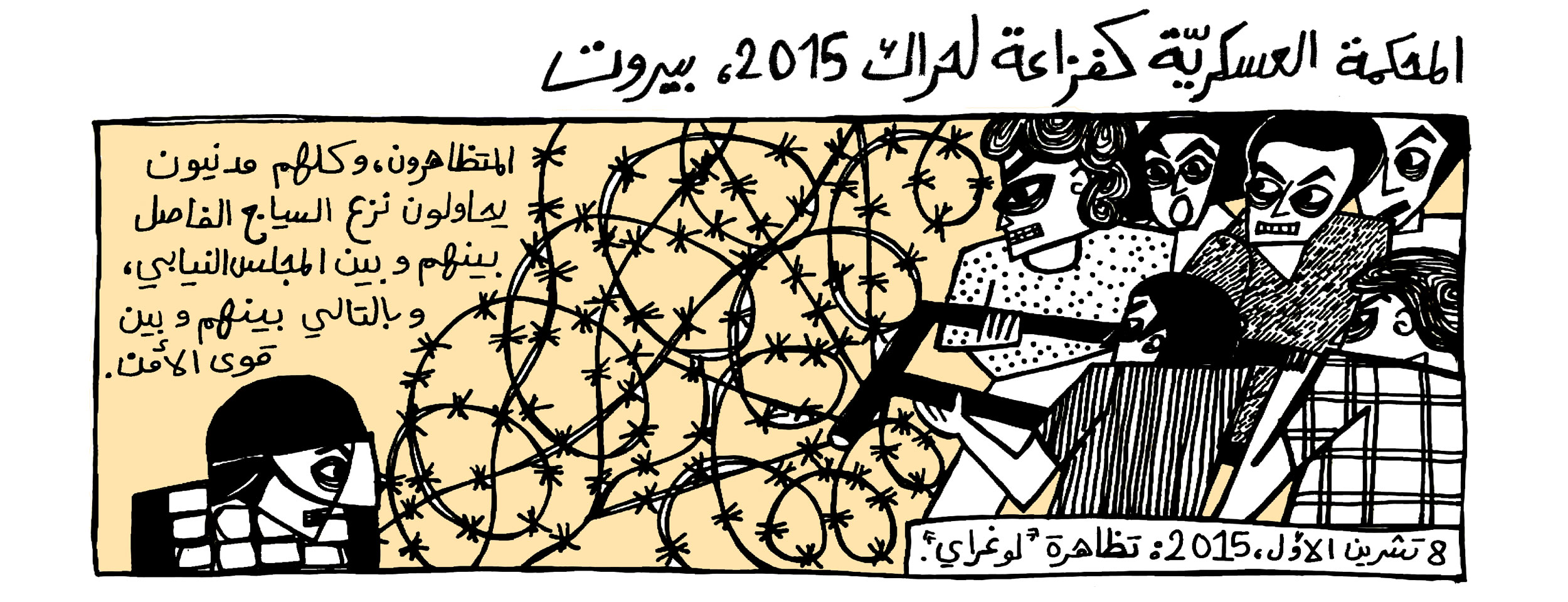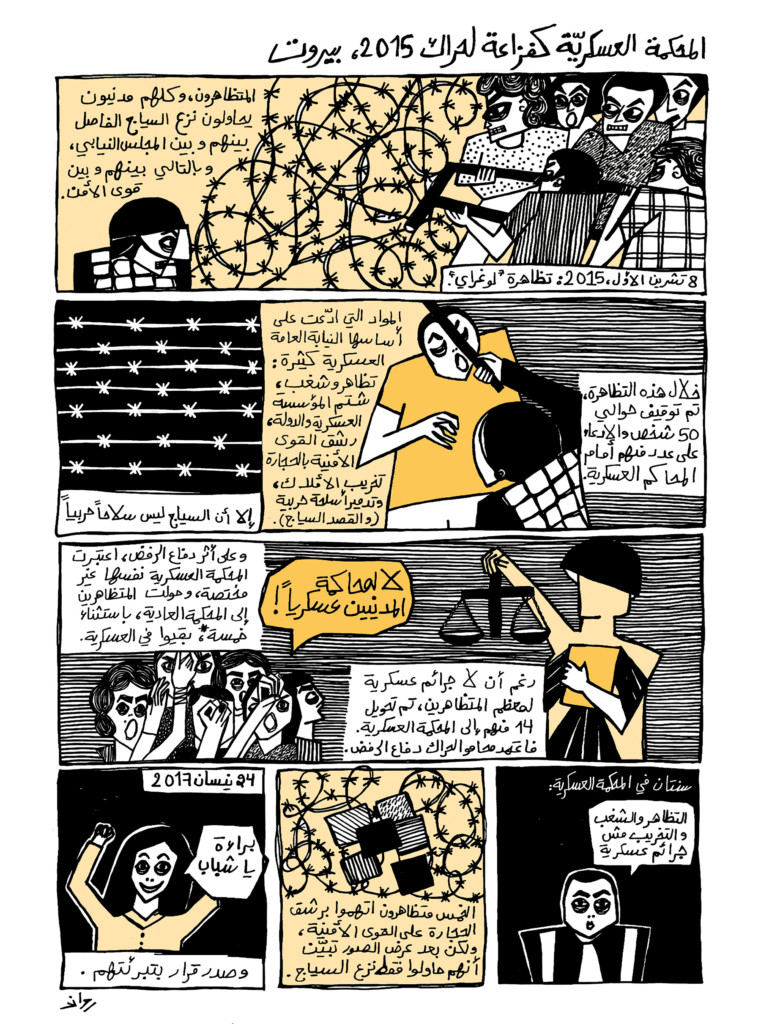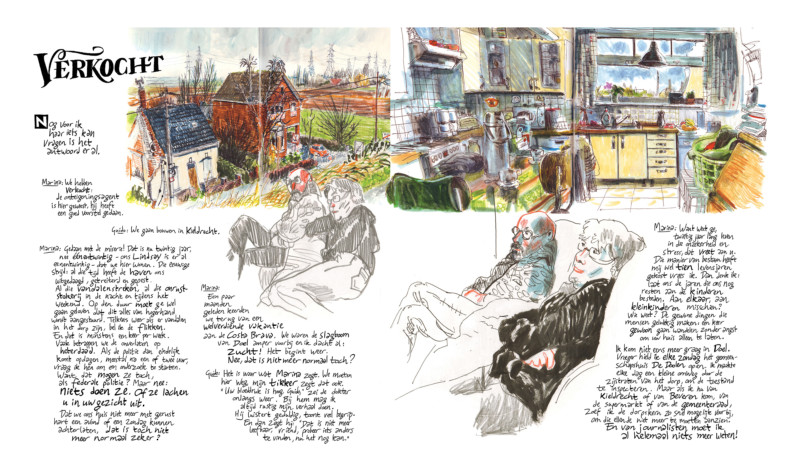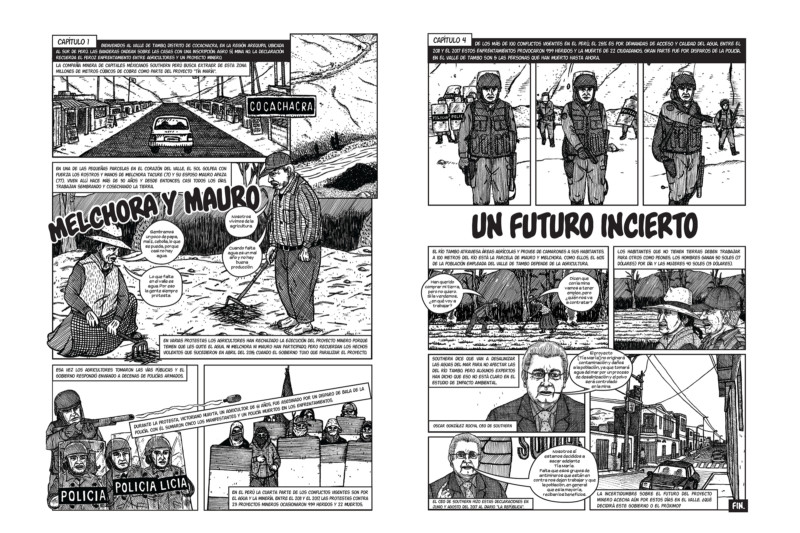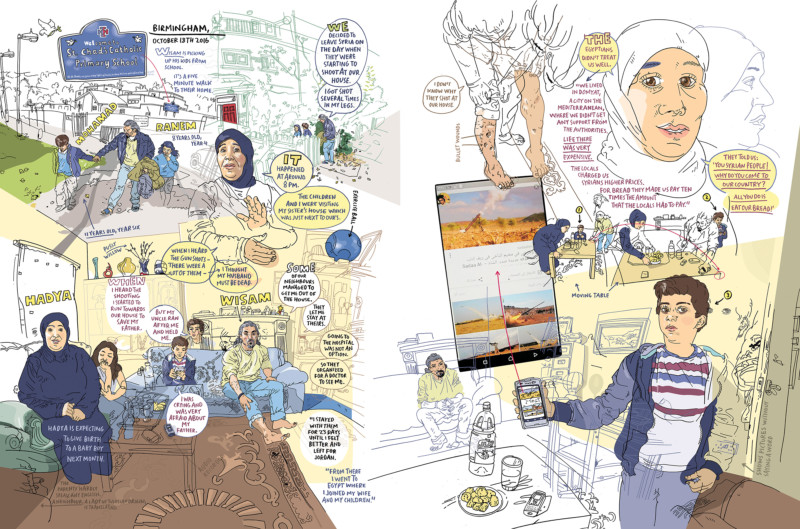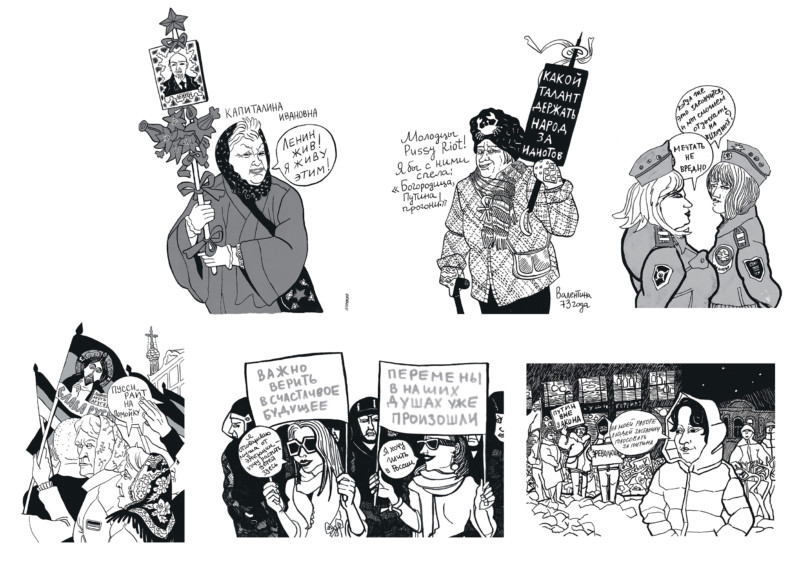More and more, comics and journalism are cross-pollinating. Artists around the world are finding that combining images and text allows them to convey urgent stories with extraordinary emotion.
Reporting through drawing has a long history with a decidedly political bent. Joe Sacco, a Maltese-American cartoonist and journalist best known for his books documenting Israeli-Palestinian relations and the Bosnian War, is often credited with inventing comics journalism, in the nineties, but before him came socially engaged comic strips, nonfiction manga, and political cartooning. Victoria Lomasko, included in this feature, finds precedent in the “albums produced by Russian soldiers, concentration camp inmates, and people who experienced the Nazi siege of Leningrad,” as she writes in the introduction to her collection Other Russias (2017).
The artists highlighted here use a variety of journalistic methods, including on-site drawing, in-depth interviews, and long-term engagement with a subject or a place. Rawand Issa, a comics journalist based in Lebanon, uses a bold graphic style to depict court cases, police violence, and political hypocrisy. In Belgium, Jeroen Janssen returns again and again to a town doomed for demolition, to document its few remaining residents and its many burned-out buildings. Olivier Kugler produces layered portraits of the Syrian refugees he interviews in England. Jesús Cossio, of Peru, works with a team to report on the complex story of a gold mine and its environmental and social effects on local residents. Picking up where the Soviet tradition of socialist realism left off, Lomasko produces a street-level view of Russia, one that typically remains unseen by the media.
Despite the immediacy of its impact, comics journalism is a slow form. Immensely labor-intensive, it demands of its practitioners extended attention and a careful eye. In this way, it offers an antidote to the churn of the news cycle, inviting us to take a closer look at the pressing matters of our time.
Rawand Issa
Rawand Issa started in comics after having worked as a journalist. In the fall of 2015, she observed anti-government protests at Le Gray Hotel in downtown Beirut, where around 50 people were arrested. This strip depicts the demonstrators’ clashes with police and the hearings that followed; more than a dozen were charged with causing a riot, fighting officers, throwing rocks, and destruction of property. This piece on the Le Gray case, as it became known, originally appeared in an Arabic publication, The Legal Agenda.
Jeroen Janssen
Jeroen Janssen is from Ghent, Belgium. He calls himself a “slow journalist” because his method involves long-term engagement with his subjects. This piece is excerpted from Er wonen nog mensen: Tekenen van leven in Doel (“People Still Live Here: Signs of Life in Doel”), which he published in Dutch in 2018. It depicts a small town trying to resist demolition to make room for the expansion of a nearby port.
Jesús Cossio
Jesús Cossio is a Peruvian illustrator, author, and editor of comic books and graphic novels. This has been excerpted from La Guerra Por El Agua (“The War For Water”) a multimedia piece about environmental disputes surrounding the Tia Maria gold mine, which was met with protests by farmers when it opened, in 2015. In response, the government sent several hundred police. The piece was created in collaboration with a group of journalists known as OjoPúblico (“Public Eye”). Cossio drew the images; the text was written by Nelly Luna Amancio.
Olivier Kugler
Olivier Kugler is based in London, where he works as a reportage illustrator. This piece, an excerpt from Escaping Wars and Waves: Encounters with Syrian Refugees (2018), is about Syrian refugees in Birmingham, United Kingdom. To create this work, Kugler interviewed and photographed Syrian refugees and their caregivers in camps, on the road, and in provisional housing in Iraqi Kurdistan, Greece, France, Switzerland, and the UK.
Victoria Lomasko
Victoria Lomasko is a graphic artist in Russia. This piece comes from her first collection of visual journalism, Other Russias (2017), originally published by n+1 books (with translations by Thomas Campbell). At protests, prisons, and industrial towns, she depicted the fears and hopes of the Russian people. “Way to go, Pussy Riot!” a woman says. “People where I work were forced to vote for Putin,” says another. A sign at a protest reads, “It’s important to believe in a happy future.”
Laura Thorne is a Canadian writer, artist, and oral historian with a background in radical and community-based publishing. She lives in Brooklyn.


